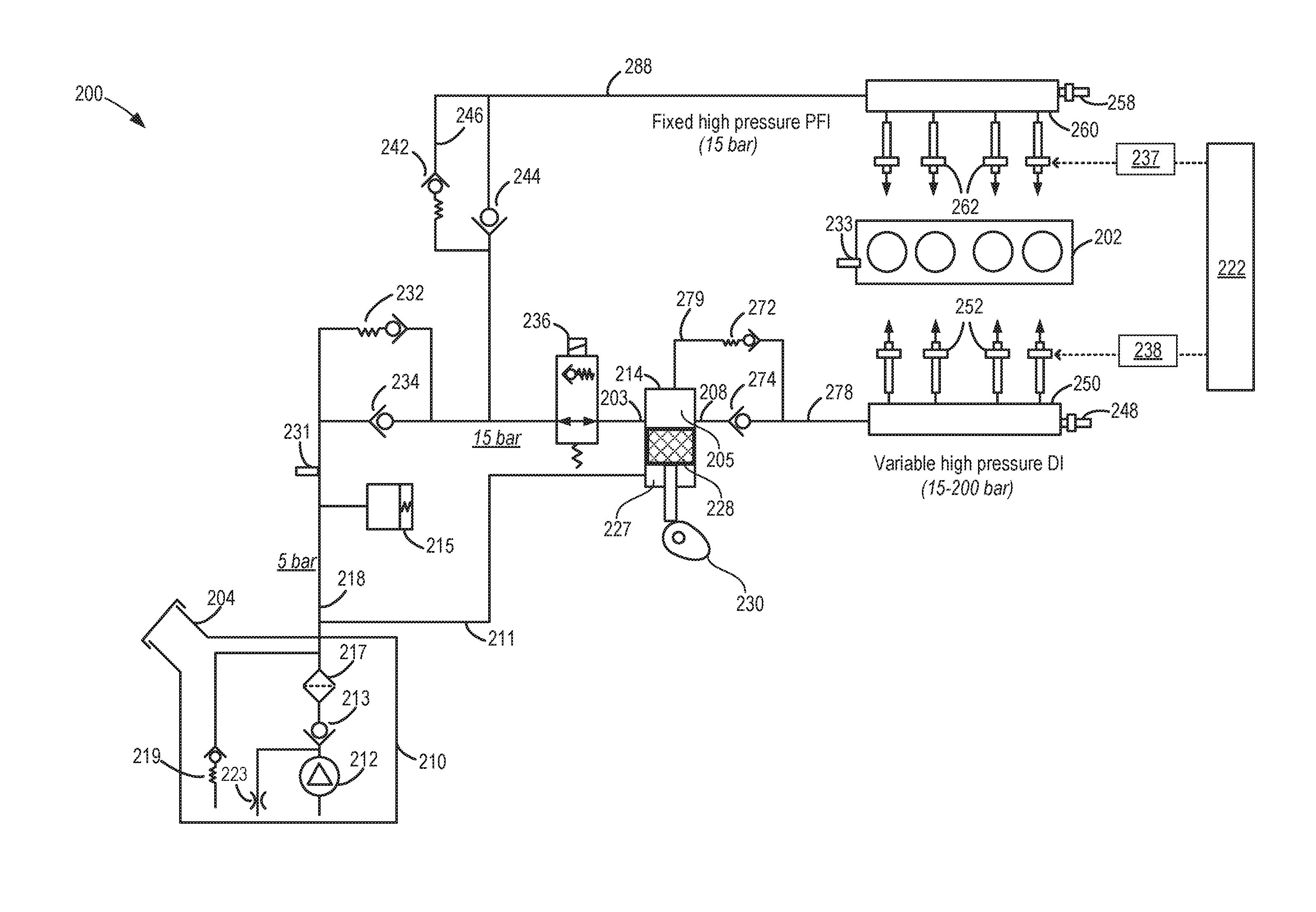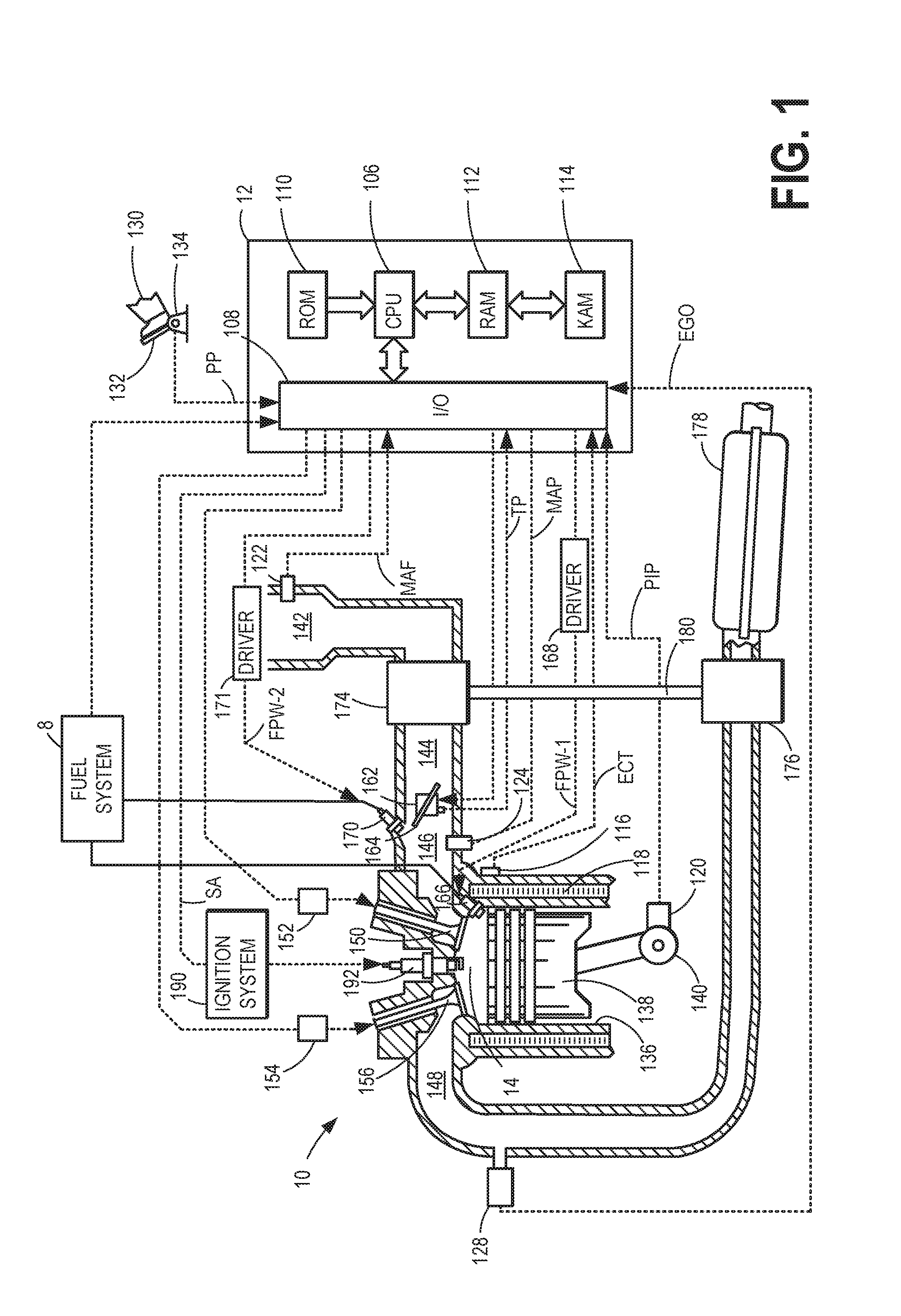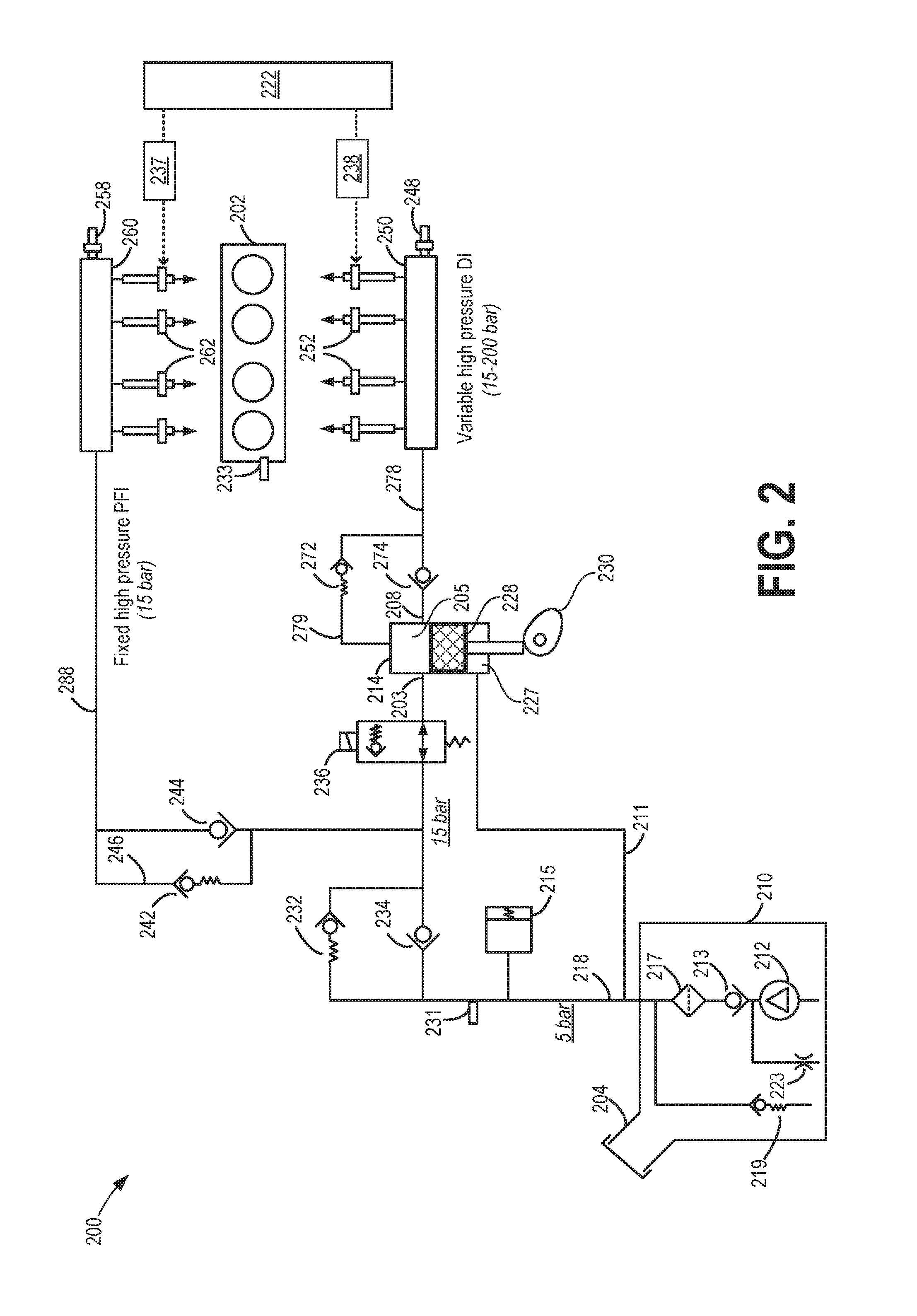Methods and systems for port fuel injection control
a technology of fuel injection and port, which is applied in the direction of electric control, combustion air/fuel air treatment, machines/engines, etc., can solve the problems of insufficient time, inability of direct fuel injectors to provide the desired amount of fuel to a cylinder, and engine may develop less power than is desired, so as to improve the cooling of the cylinder, less power, and higher compression ratio
- Summary
- Abstract
- Description
- Claims
- Application Information
AI Technical Summary
Benefits of technology
Problems solved by technology
Method used
Image
Examples
Embodiment Construction
[0015]The following detailed description provides information regarding a dual fuel injection system and a method for reducing fuel vapor formation at a port injection fuel rail. An example embodiment of a cylinder in an internal combustion engine is given in FIG. 1 while FIG. 2 depicts an example fuel system that may be used with the engine of FIG. 1. A controller may be configured to perform a control routine, such as the example routine of FIGS. 3A-3B, to adjust a port fuel injection amount based on engine speed-load conditions based on input from a calibrated map (FIG. 4), and independent of fuel rail temperature, to reduce fuel vapor formation at the port injection rail. An example port fuel injection adjustment is shown at FIG. 5.
[0016]Regarding terminology used throughout this detailed description, a high pressure pump, or direct injection pump, may be abbreviated as a DI or HP pump. Similarly, a low pressure pump, or lift pump, may be abbreviated as a LP pump. Port fuel inje...
PUM
 Login to View More
Login to View More Abstract
Description
Claims
Application Information
 Login to View More
Login to View More - R&D
- Intellectual Property
- Life Sciences
- Materials
- Tech Scout
- Unparalleled Data Quality
- Higher Quality Content
- 60% Fewer Hallucinations
Browse by: Latest US Patents, China's latest patents, Technical Efficacy Thesaurus, Application Domain, Technology Topic, Popular Technical Reports.
© 2025 PatSnap. All rights reserved.Legal|Privacy policy|Modern Slavery Act Transparency Statement|Sitemap|About US| Contact US: help@patsnap.com



